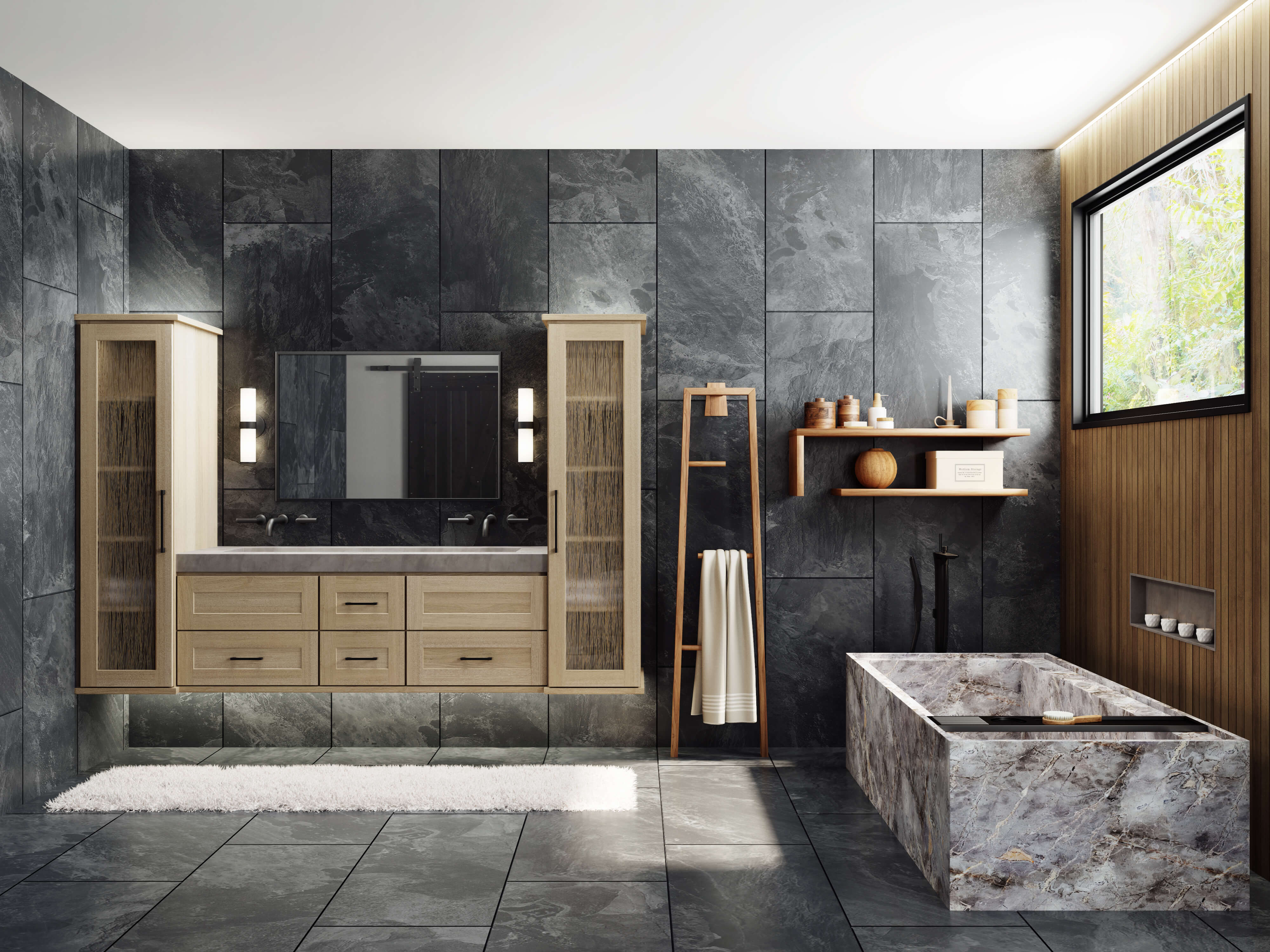The Evolution of Bathroom Cabinets: Be Modern Bathroom Cabinets

The bathroom, once a utilitarian space, has undergone a remarkable transformation into a haven of relaxation and personal sanctuary. This evolution is reflected in the design of bathroom cabinets, which have evolved from purely functional to stylish and sophisticated elements.
Traditional Bathroom Cabinets, Be modern bathroom cabinets
Traditional bathroom cabinets often embody a sense of timeless elegance. They are characterized by intricate details, rich materials, and a focus on functionality.
- Materials: Traditional cabinets are often crafted from solid wood, such as oak, cherry, or mahogany. These woods are known for their durability and natural beauty, adding a touch of warmth and sophistication to the bathroom.
- Finishes: Traditional cabinets typically feature rich finishes like stained wood, painted surfaces, or even hand-painted details. These finishes enhance the natural beauty of the wood and contribute to the overall traditional aesthetic.
- Common Features: Traditional bathroom cabinets often include ornate hardware, such as brass or bronze handles, and decorative elements like raised panels or molding. They may also feature built-in mirrors, medicine cabinets, and shelves, providing ample storage space.
Modern Bathroom Cabinets
Modern bathroom cabinets represent a departure from traditional designs, embracing minimalist aesthetics and innovative materials. They prioritize clean lines, functionality, and a sense of openness.
- Materials: Modern cabinets often utilize materials like lacquered wood, high-gloss finishes, or even metal and glass. These materials create a sleek and contemporary look, reflecting light and adding a touch of sophistication.
- Finishes: Modern cabinets often feature smooth, minimalist finishes, with a focus on clean lines and geometric shapes. They may be painted in neutral colors or bold, contrasting shades, depending on the desired aesthetic.
- Common Features: Modern cabinets often incorporate integrated lighting, hidden storage compartments, and sleek hardware. They may also feature open shelving, showcasing decorative items or toiletries, creating a sense of openness and airiness.
Contemporary Design Trends
Contemporary design trends have significantly influenced the evolution of bathroom cabinetry. The demand for sustainable materials, smart technology integration, and personalized design solutions has led to innovative developments in the industry.
- Sustainable Materials: Increasingly, designers and manufacturers are using eco-friendly materials like bamboo, reclaimed wood, and recycled plastic to create sustainable bathroom cabinets. These materials reduce environmental impact while maintaining high aesthetic standards.
- Smart Technology: Smart technology is transforming bathroom cabinets, with features like touch-sensitive drawers, built-in Bluetooth speakers, and automated lighting systems. These technologies enhance convenience and create a more immersive bathroom experience.
- Personalized Design: Modern bathroom cabinets allow for a high degree of customization, with options for different sizes, finishes, and configurations. This allows homeowners to create a truly unique and personalized bathroom space that reflects their individual style and needs.
Materials and Finishes for Modern Bathroom Cabinets

The choice of materials and finishes for modern bathroom cabinets plays a crucial role in defining the overall aesthetic and functionality of the space. Modern bathroom cabinets are known for their sleek lines, minimalist designs, and use of high-quality materials that exude a sense of sophistication and durability.
Materials for Modern Bathroom Cabinets
Modern bathroom cabinets are crafted from a diverse range of materials, each with its unique advantages and disadvantages.
- Wood: Wood is a timeless and versatile material that brings warmth and natural beauty to any bathroom. It offers a wide range of finishes and colors, making it easy to integrate into various design styles. Popular wood choices include oak, maple, cherry, and walnut. While wood is naturally durable, it requires regular maintenance, including sealing and refinishing, to protect it from moisture and prevent warping.
- Metal: Metal cabinets are becoming increasingly popular in modern bathrooms due to their sleek, industrial aesthetic. Stainless steel, aluminum, and brass are commonly used materials, offering a range of finishes from brushed to polished. Metal cabinets are known for their durability and resistance to moisture, making them a practical choice for bathrooms. However, they can be more expensive than wood cabinets and may require specialized cleaning to maintain their luster.
- Glass: Glass cabinets offer a contemporary and minimalist look, allowing for a sense of openness and light in the bathroom. They are often used in combination with other materials, such as metal or wood, to create visually interesting designs. Glass cabinets are easy to clean and maintain but may require careful handling to prevent breakage.
- Composite Materials: Composite materials, such as laminates, acrylics, and thermoplastics, offer a durable and affordable alternative to traditional materials. They are resistant to moisture, scratches, and stains, making them a practical choice for bathrooms. Composite materials come in a wide range of colors and textures, allowing for customization to match any design style.
Finishes for Modern Bathroom Cabinets
The finish applied to modern bathroom cabinets significantly impacts their aesthetic appeal and overall feel. Common finishes include:
- Painted Finishes: Painted finishes offer a wide range of colors and can be customized to match any bathroom decor. They are relatively affordable and easy to maintain.
- Lacquered Finishes: Lacquered finishes provide a high-gloss, durable, and moisture-resistant finish. They are often used on metal cabinets to enhance their shine and protect them from scratches.
- Natural Wood Finishes: Natural wood finishes showcase the inherent beauty of wood grain. They can be oiled, waxed, or stained to enhance the wood’s color and texture.
